Along the border of Lombardy and Switzerland, tucked between the Alps, lies the Valtellina wine region. Though it’s just a two-hour drive from Milan, you won’t find crowds or large-scale producers dominating the landscape. Instead, Valtellina is home to a tight-knit community of winemakers dedicated to traditional methods of crafting wines that reflect this remarkable terrain.
An Introduction to the Valtellina Wine Region
Nestled between the alpine peaks, Valtellina feels worlds apart from Italy’s more famous wine territories. Here, nature and tradition meet eye to eye. The first thing you’ll notice are the terraced vineyards, clinging to steep slopes that seem to defy gravity.
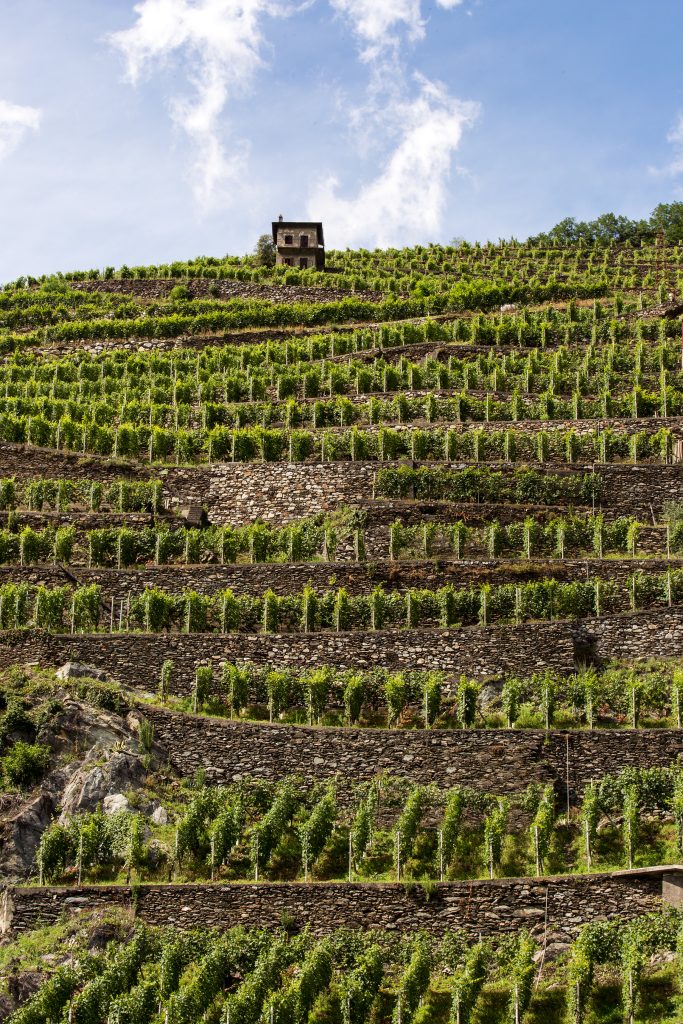
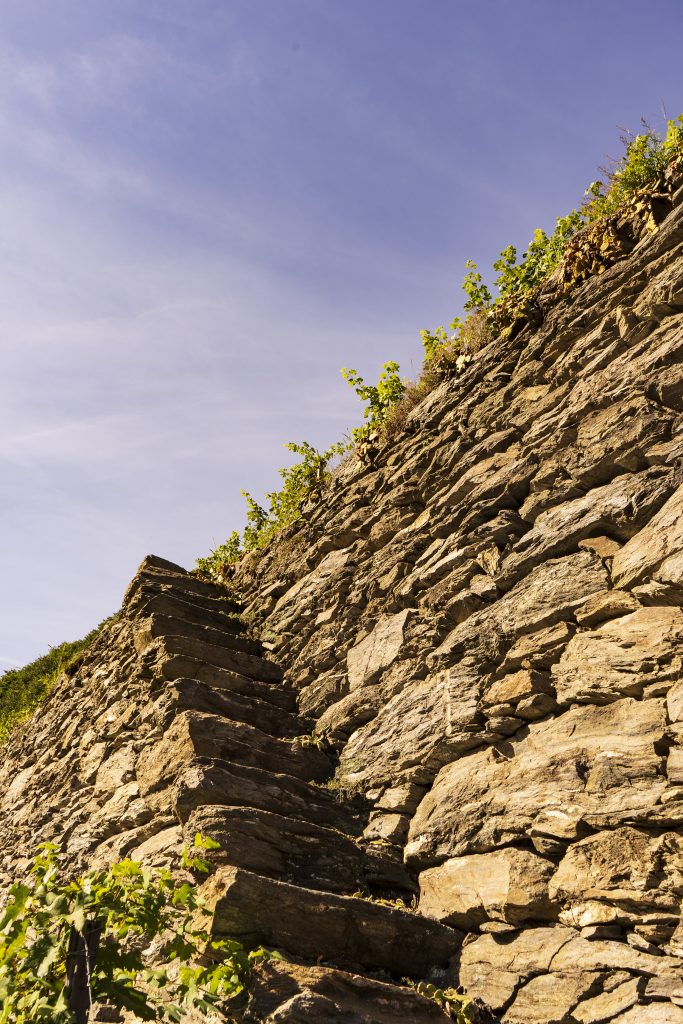
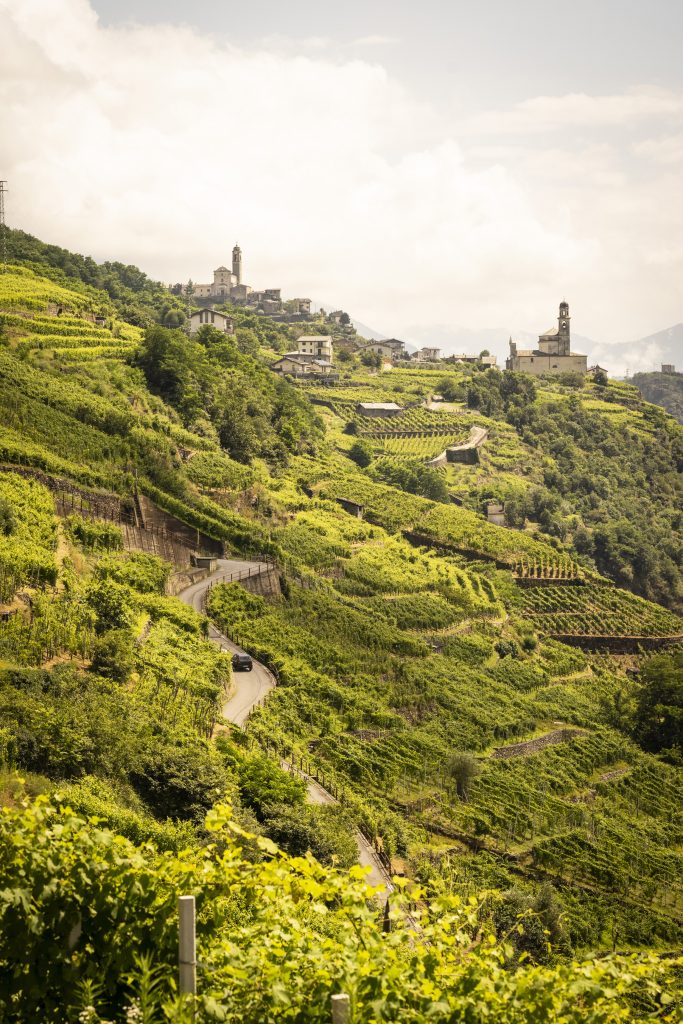
This geography creates a microclimate unlike anywhere else in Italy. Despite their high-altitude setting, the vineyards have southern exposure, so they soak in abundant sunlight while receiving shelter from northern winds.
Valtellina wines are often called vino eroico, heroic wines. Why? Unlike the rolling hills of Tuscany or Piedmont, these vineyards sit on extremely steep slopes, some reaching gradients of 70%. Because machinery can rarely be used, nearly every step of production is manual and labor-intensive. Producing wine in such a challenging environment truly is a feat of dedication, giving both the wines and their makers a heroic reputation.
The Sub-Regions of Valtellina
The Valtellina wine region is divided into five subzones, each with its own distinct personality.
- Sassella: Perhaps the most widely known, Sassella wines are firm, elegant, and mineral-driven. The name comes from sasso (“rock”), a shoutout to the stony vineyards they come from, west of Sondrio.
- Grumello: Slightly softer and more aromatic, Grumello wines often show fruity and floral notes.
- Inferno: Aptly named “hell” in Italian for its scorching summer terraces, Inferno produces bold, intense wines with spicy character.
- Valgella: The easternmost subregion, Valgella, offers delicate wines with bright acidity and cherry tones.
- Maroggia: The smallest of the five subzones, it produces balanced wines that blend the styles of its neighboring regions.
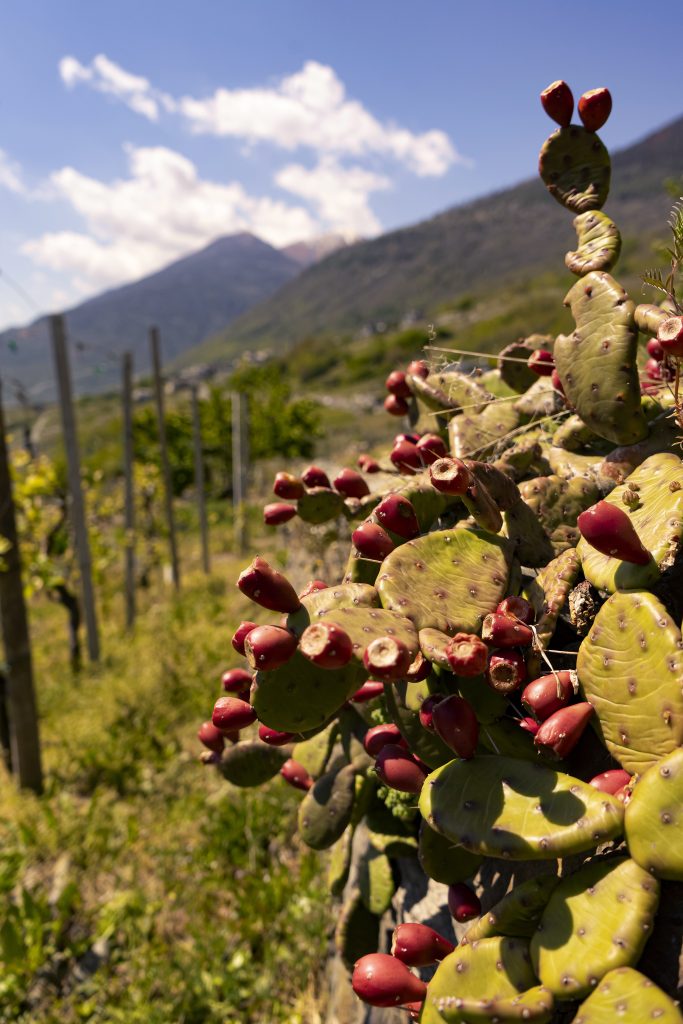
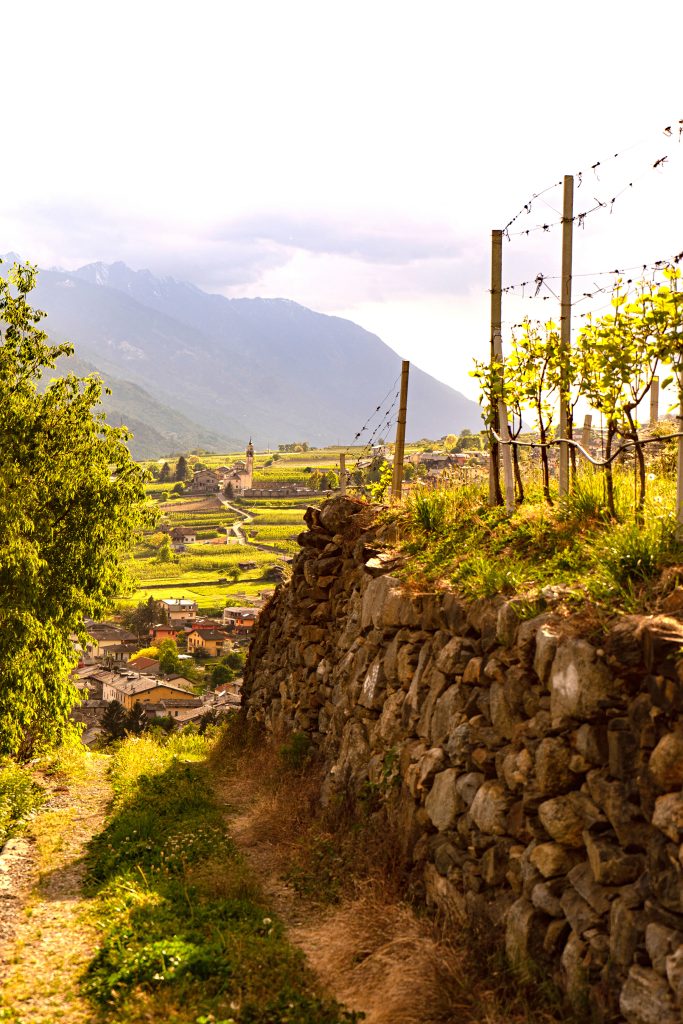
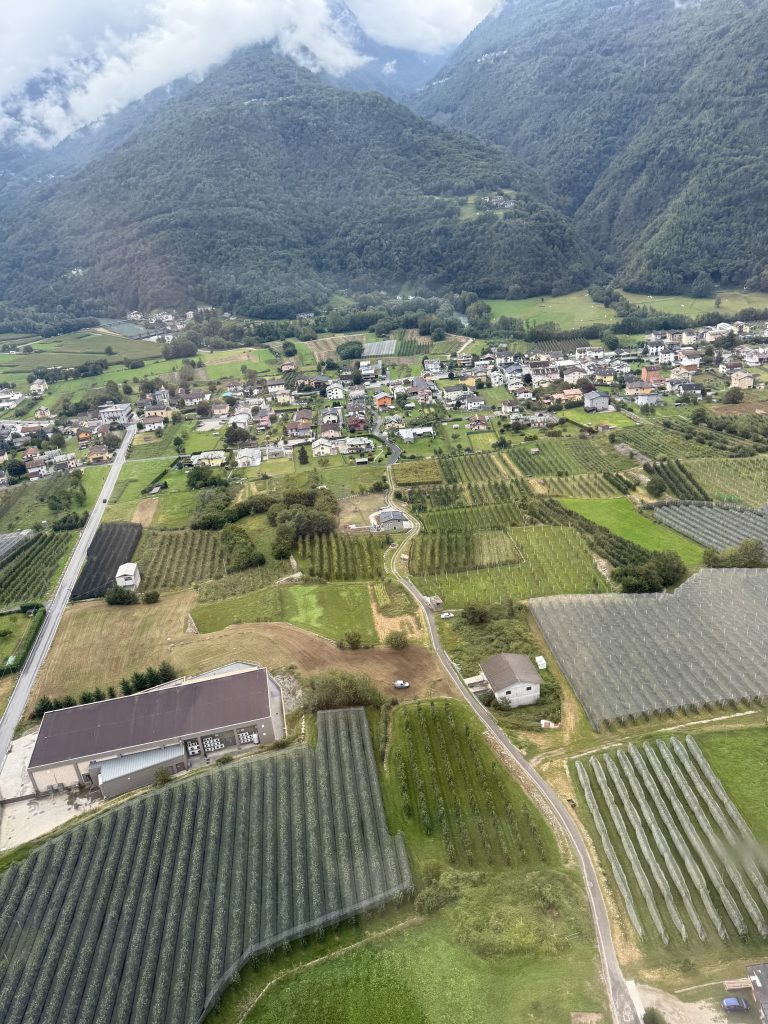
These subzones showcase that even just slight variations in altitude, sun exposure, minerals, and soil can have a profound effect on a wine’s final result.
The Star of Valtellina: Nebbiolo
Fans of Nebbliolo are undoubtedly familiar with Piedmont’s Barolo and Barbaresco wines. However, Nebbiolo in the Valtellina wine region takes on a distinct identity: Chiavennasca, as locals call it. Here, the grape thrives on the sunny terraces and granite soils, producing wines that are lighter in body but just as complex.
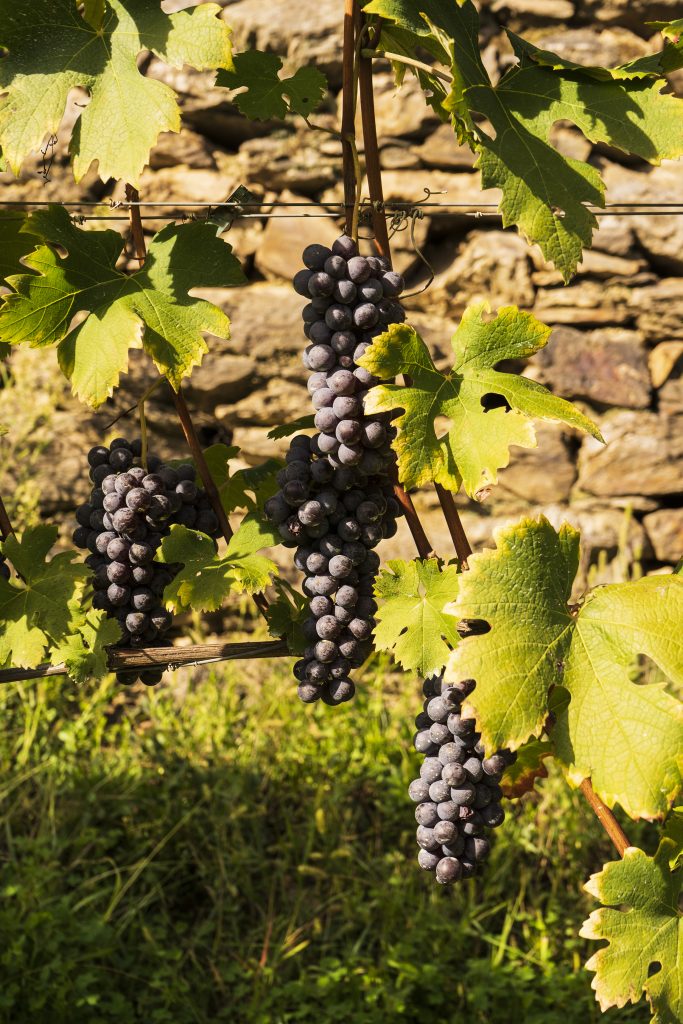
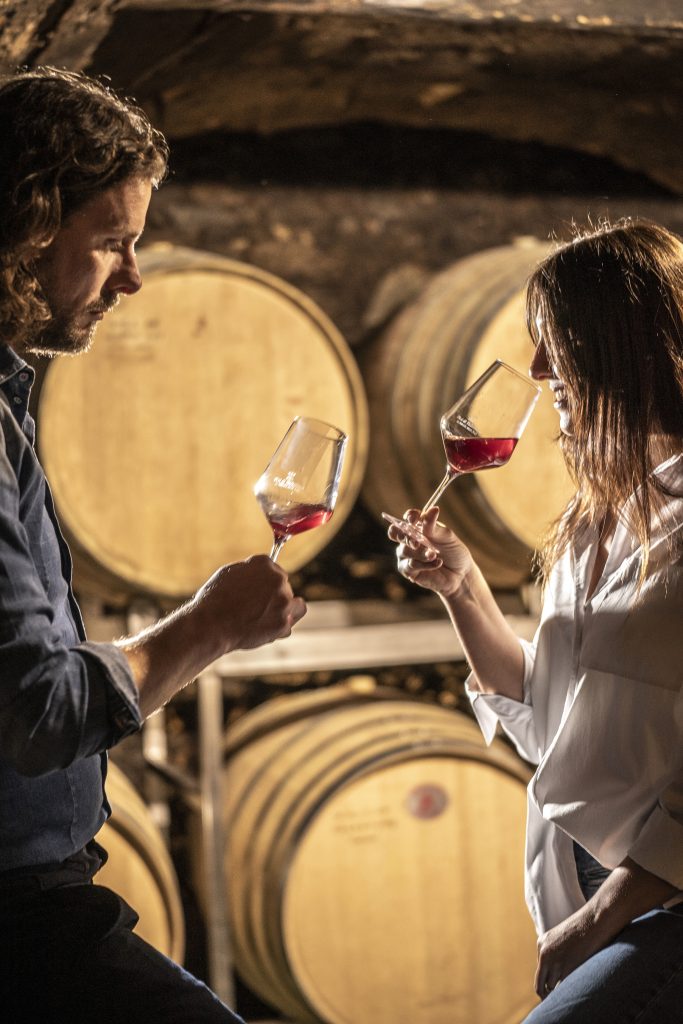
In Valtellina, the Nebbiolo wines taste of fruit, earth, and alpine herbs. The wines often have aromas of dried cherry, rose, herbs, and a subtle minerality that reflects its stony terrain. The most remarkable is the Sforzato di Valtellina (Sfursat), which is made from Nebbiolo grapes that are partially dried before fermentation. Try a glass of this – you’ll be hooked.
Why Visit Valtellina?
The Valtellina wine region remains one of Italy’s best-kept wine secrets, but that is slowly changing. If you can, visit now, before the hoards of crowds arrive. Wander through the local cantine, meet the producers, and experience their passion for this land and its traditions.
The region is also increasing more touristic offerings. Consider booking a guided tour biking or hiking through the vineyards! There are plenty of fun experiences centered around blending wine with the outdoors.
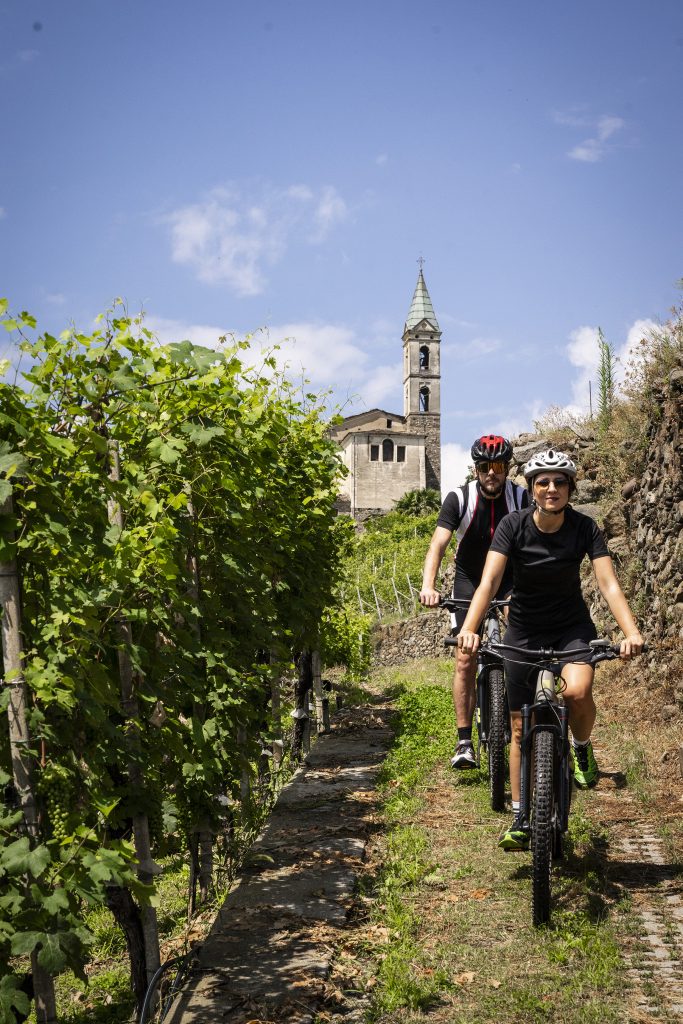
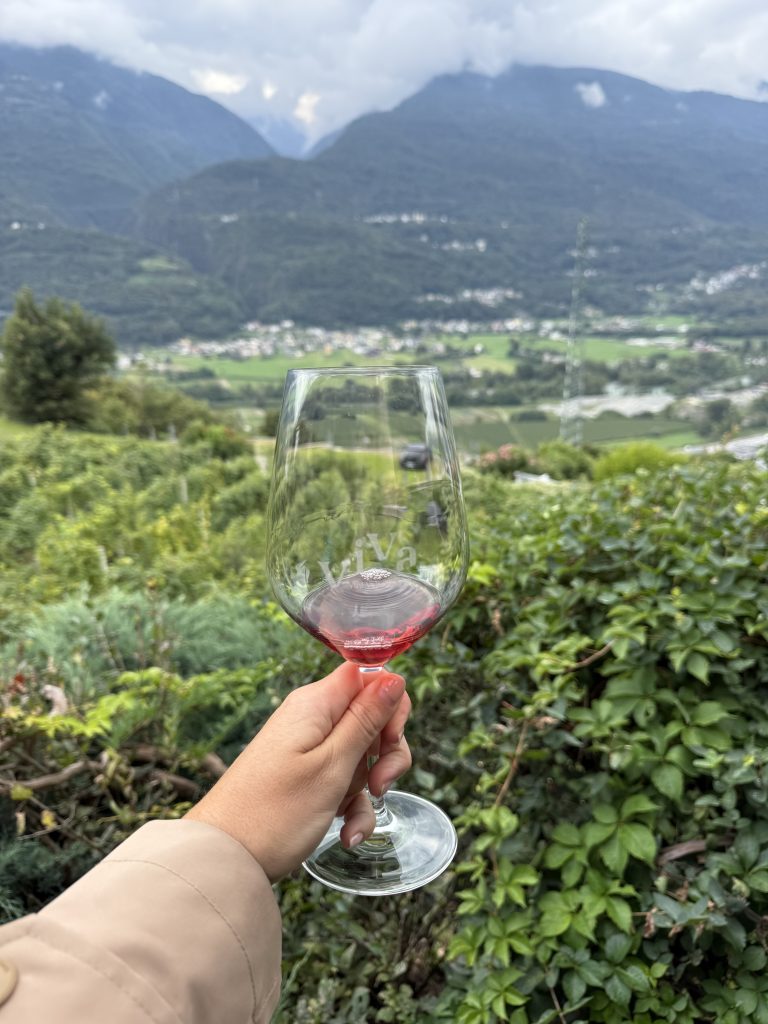
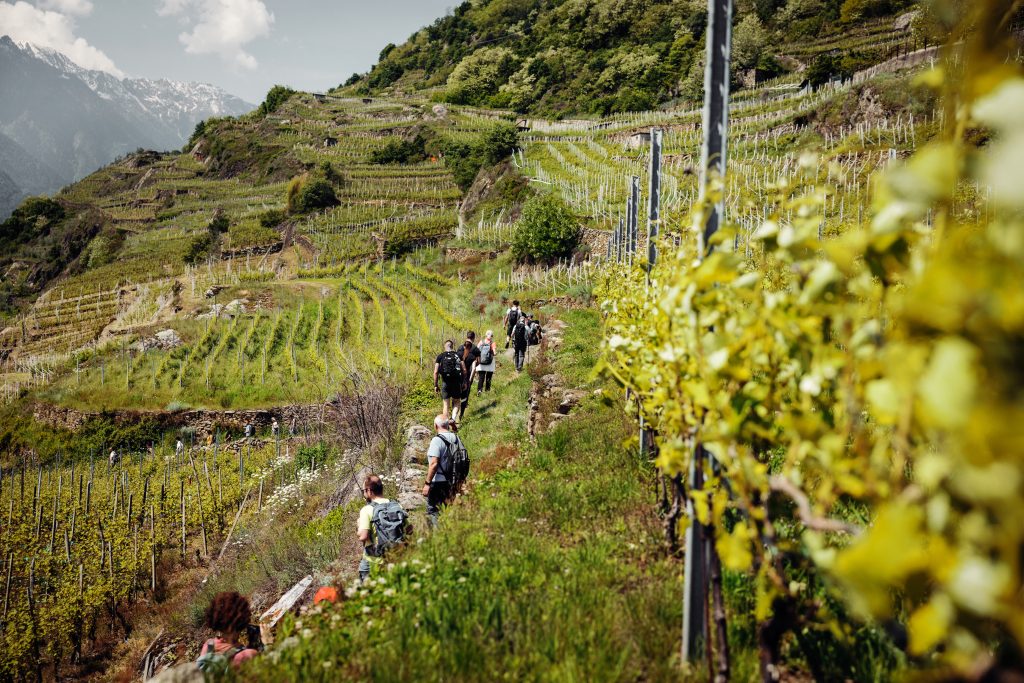
I had the honor of meeting a group of Valtellina wine producers this year, all of whom are eager to share their knowledge, traditions, and (of course) wines with a wider audience. I promise you will be met with open arms and would be a much more authentic experience than what you may find in more popular wine regions.
For Italian wine enthusiasts seeking a blend of nature, history, and character, the Valtellina wine region offers you something utterly unique.


